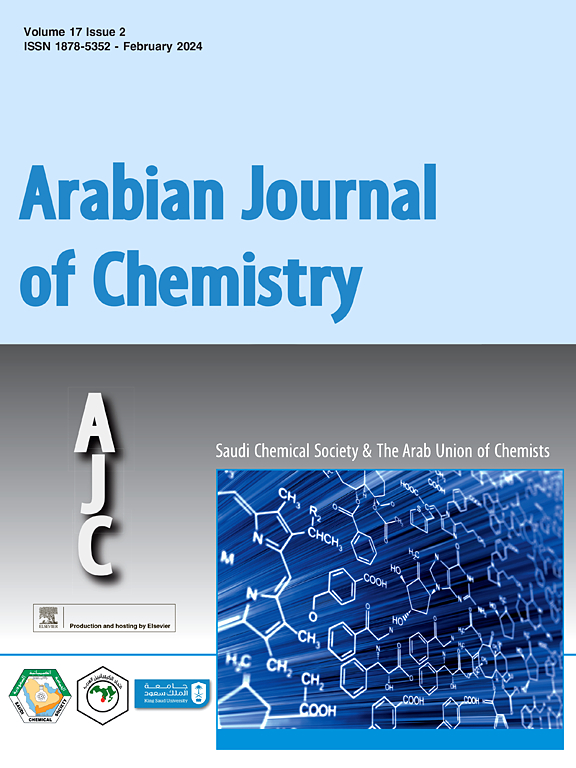纳米流体在强化采油工艺中的应用--机遇与挑战
IF 5.2
2区 化学
Q2 CHEMISTRY, MULTIDISCIPLINARY
引用次数: 0
摘要
提高石油采收率(EOR)对于开发一次和二次采油阶段后的剩余石油仍然至关重要。虽然传统方法仍有其优势,但化学 EOR(尤其是利用纳米流体)的兴起却因其经济可行性、更高的采油效率和适应性而脱颖而出。纳米流体提高石油采收率(N-EOR)的诱惑力在研究人员中与日俱增,尽管其基本机制仍存在不一致和模糊之处。本综述仔细研究了纳米流体与重油分子、颗粒和表面相互作用的微观力学、纳米流体辅助采油的基本方法、孔隙和岩心内的多相位移以及此类流动过程中的流固耦合。主要研究结果表明,纳米流体可改变矿物润湿性、调整油/水界面张力、改变结构分隔压力并降低粘度。N-EOR 的能力在很大程度上取决于纳米粒子的吸附力。纳米粒子对矿物表面的亲和力可诱导向水湿状态转变,而它们在油/水边界的相互作用可调整界面张力,促进乳化。一个突出的发现是沥青质在纳米颗粒上的吸附作用,它可以减轻重油中沥青质的浓度,从而降低粘度并提高石油提取率。与以往仅关注结果的研究不同,我们的综述深入探讨了纳米粒子吸附的复杂性,重点关注纳米粒子吸附特性与 N-EOR 操作之间的和谐互动。我们揭示了多相岩芯位移过程中纳米流体行为的复杂性,并提供了相关模拟的详细概述。总之,本研究揭开了潜在 N-EOR 技术的神秘面纱,并勾勒出新的研究轨迹。我们的发现旨在丰富对 N-EOR 现象的理解,强调纳米流体在多相堆芯转换和计算模拟中的关键作用。此外,我们还强调了仍然存在的挑战,引导科学界继续进行纳米粒子的创新和探索。本研究的新颖之处如下:纳米流体主要用于第三次采油过程,而不用于第一次和第二次采油过程。此外,在第三次采油过程中,由于纳米材料的沉积特性,一些纳米流体可能会残留在矿井中。目前,我们还致力于开发新的工艺,以减少纳米材料在矿井中的沉积。目前,纳米流体如何提高采油机理尚不清楚,采油机理也相对混乱。本文对这些机理进行了分析。本文章由计算机程序翻译,如有差异,请以英文原文为准。
Nanofluids application in enhanced oil recovery process-opportunities and challenges
Enhanced oil recovery (EOR) remains paramount for tapping into residual oil post primary and secondary recovery stages. While conventional methods hold their ground, the rise of chemical EOR, especially utilizing nanofluids, stands out due to its economic viability, enhanced recovery efficiency, and adaptability. The allure of nanofluid-enhanced oil recovery (N-EOR) has grown amongst researchers, albeit with underlying mechanisms that still harbor inconsistencies and ambiguities. This review meticulously examines the micro-mechanics of nanofluid interactions with heavy oil molecules, particles, and surfaces, the methodologies underpinning nanofluid-assisted EOR, multiphase displacement within pores and cores, and the fluid–solid coupling during such flows. Key findings show that nanofluids alter mineral wettability, adjust oil/water interfacial tension, shift structural disjoining pressure, and curtail viscosity. The prowess of N-EOR largely hinges on nanoparticle adsorption. Their affinity for mineral surfaces induces a shift towards water-wet states, while their interplay at oil/water boundaries can tweak interfacial tensions, fostering emulsification. One standout revelation is the adsorption of asphaltenes on nanoparticles, which mitigates asphaltene concentrations in heavy oil, thereby diminishing viscosity and amplifying oil extraction. Contrary to previous studies that merely spotlighted outcomes, our review delves deep into the complexities of nanoparticle adsorption, spotlighting the harmonious interplay between nanoparticle adsorption features and N-EOR operations. We unravel the intricacies of nanofluid behaviors during multiphase core displacement and provide a detailed overview of pertinent simulations. To encapsulate, this study demystifies potential N-EOR techniques and charts fresh research trajectories. Our revelations aim to enrich the comprehension of N-EOR phenomena, accentuating the pivotal role of nanofluids in multiphase core transitions and computational simulations. Furthermore, we highlight lingering challenges, directing the scientific community towards continued nanoparticle innovations and exploration. The novelty of this study is as follows: Nanofluids are mainly used in the third oil recovery process, and are not used in the first and second oil recovery processes. In addition, during the third oil recovery, some nanofluids may remain in the mine due to the sedimentation characteristics of nanomaterials. Currently, we are also committed to developing new processes to reduce the deposition of nanomaterials in the mine. At present, it is not clear how nanofluids enhance the oil recovery mechanism, and the oil recovery mechanism is relatively chaotic. In this article, we analyzed these mechanisms.
求助全文
通过发布文献求助,成功后即可免费获取论文全文。
去求助
来源期刊

Arabian Journal of Chemistry
CHEMISTRY, MULTIDISCIPLINARY-
CiteScore
10.80
自引率
3.30%
发文量
763
审稿时长
63 days
期刊介绍:
The Arabian Journal of Chemistry is an English language, peer-reviewed scholarly publication in the area of chemistry. The Arabian Journal of Chemistry publishes original papers, reviews and short reports on, but not limited to: inorganic, physical, organic, analytical and biochemistry.
The Arabian Journal of Chemistry is issued by the Arab Union of Chemists and is published by King Saud University together with the Saudi Chemical Society in collaboration with Elsevier and is edited by an international group of eminent researchers.
 求助内容:
求助内容: 应助结果提醒方式:
应助结果提醒方式:


